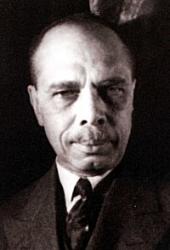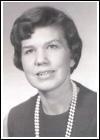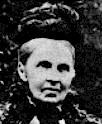Planning worship?
Check out our sister site, ZeteoSearch.org,
for 20+ additional resources related to your search.
- |
User Links
Person Results
Graham Kendrick

b. 1950 Topics: Evangelism and Mission Author of "주 여 사 낭 의 빛 을 비 추 사 (Lord, the Light of Your Love (Shine, Jesus, Shine))" in 찬송과 예배 = Chansong gwa yebae = Come, Let Us Worship Graham Kendrick (b. England, August 2, 1950), the son of a Baptist minister in Northamptonshire, is one of the most prolific Christian singer-songwriters in the United Kingdom. He’s written music for over thirty years, and to date has released thirty-eight albums. He is best known for his songs “Shine, Jesus, Shine,” “Knowing You,” and “The Servant King.” Kendrick has received honorary doctorates in divinity from Brunel University and Wycliffe College. In 1987 he helped co-found the March for Jesus, which today is a global phenomenon in which Christians take their faith to the streets in a celebration of Christ. In 1995 Kendrick received a Dove Award for his international work, and he remains an active advocate for Compassion International, which is a Christian child sponsorship organization dedicated to the long-term development of children living in poverty around the world, and also is a contributor to CompassionArt, an organization with the aim of generating income from works of art to assist in the relief of suffering around the planet.
Laura de Jong
Graham Kendrick
Eugene Thomas
b. 1941 Topics: Missions and Evangelism Arranger of "OUR GOD REIGNS" in The Hymnal for Worship and Celebration
Eugene Thomas
Betty Pulkingham
1928 - 2019 Person Name: Betty Pulkingham, 1950- Topics: Evangelism and Mission Arranger of "ALLELUIA NO. 1" in The Covenant Hymnal Betty Carr Pulkingham was born in 1928 in Burlington, North Carolina. She received a B.S. in Music in 1949 from the University of North Carolina, Greensboro and she did graduate studies at the Eastman School of Music. She was Instructor of Music Theory at the University of Texas. In 1951, she married a seminarian Graham Pulkingham. They ministered together in various places in the U.S., England and Scotland; they were founding members of the Community of Celebration, an Anglican religious order. She travelled widely with "The Fisherfolk," an outreach music ministry connected with the Community of Celebration. Betty Pulkingham was a well known composer and arranger. She co-edited and published a number of songbooks and books on worship; and served on the Episcopal Church's Standing Commission on Church Music from 1988-1994. She and her husband returned to Burlington and then she later moved to Austin, Texas to live with family. She died in Austin, May 9, 2019 at the age of 90.
Dianne Shapiro, from Obituary (https://www.richandthompson.com/tributes/Betty-Pulkingham) (accessed 6-21-2019)
Betty Pulkingham
Richard Gillard
b. 1953 Person Name: Richard Gillard, 1953- Topics: Evangelism and Mission Author of "Will You Let Me Be Your Servant" in The Covenant Hymnal Gillard, Richard. (Malmesbury, Wiltshire County, England, May 22, 1953- ). The eldest of six children, he emigrated to New Zealand with his family when he was three years old. Writes, "I've had almost no formal musical training. I'm a self-taught guitarist and play mostly in a folk style." Regarding "The Servant Song," he says it "was first published in 1978 on a record album by Scripture in Song called "Father Make Us One" and has appeared subsequently in other Scripture in Song publications including a song book entitled "Songs of Praise" which is widely used by New Zealand congregations. It has also been recorded by the St. Pauls Singers of St Pauls Anglican Church. This album, called New Harvest introduces songs and hymns from their own songbook of the same name."
--Letter from Richard Gillard to Mary Louise VanDyke, 25 March 1987, DNAH Archives
Richard Gillard
Cesáreo Gabarain
1936 - 1991 Person Name: Cesáreo Gabaráin Topics: Discipleship and Mission; Evangelism; Service; Work Author of "Lord, You Have Come to the Lakeshore (Tú has venido a la orilla)" in Glory to God Cesáreo Gabaráin, a Spanish priest involved in liturgical renewal following Vatican II.
Bert Polman
Cesáreo Gabarain
Twila Paris
b. 1958 Topics: Missions and Evangelism Author of "Faithful Men" in The Hymnal for Worship and Celebration
Twila Paris
James Weldon Johnson

1871 - 1938 Person Name: James Weldon Johnson, 1871-1938 Topics: Evangelism and Mission Author of "Lift Every Voice and Sing" in The Covenant Hymnal James Weldon Johnson MA PhD USA 1871-1938. Born at Jacksonville, FL, he attended Clark University, Atlanta, GA, and also spent three months in the backwoods of Georgia., taking in the culture there. While in school he published a paper, ”The daily American newspaper”, which ran for a year until terminated for lack of funding. He graduated in 1894. He then taught at the largest school in Jacksonville, FL, eventually becoming principal and adding 9th & 10th grades there. While there he began preparing for the FL bar exam, taking it in 1897. In 1904 he became treasurer of the Colored Republican Club, becoming its president the following year. He became an author, activist, educator, lawyer, and diplomat. A musician from youth, he collaborated with his brother, Rosamond, also a musician, and Bob Cole to write Broadway songs, and they achieved some success. They also wrote an opera, “Tolosa”, satirizing the U.S. annexation of the Pacific islands. He became a writer and Civil Rights activist. He did the editorial page of the New York Age, an African-American newspaper. In 1916 he became active in the NAACP, and in 1917 he added many chapters to its southern membership. He was its executive secretary (essentially its operating officer) from 1920-1930. He was involved in the campaign to pass the Dyer Anti-lynching Bill. He wrote poems, novels, and anthologies, and collected poems and spirituals from black culture. He wrote the lyrics to the Negro National Anthem, “Lift every voice and sing”, in honor of Booker T Washington, who visited his school and heard the poem recited by 500 school children in his presence, paying tribute to Abraham Lincoln’s birthday. He participated in Theodore Roosevelt’s successful presidential campaign, and was rewarded by receiving an appointment as U.S. Consul to Venezuela (1906-1909), and later to Nicaragua (1909-1913). He married activist,Grace Elizabeth Nail during this period. They had collaborated on a screenwriting project. They had no children. In 1930, after years leading the NAACP, he became professor of creative literature and writing at Fisk University ( a historically black university), Nashville, TN, where he lectured on a wide range of issues. In 1934 he was the first African-American professor hired at New York University, where he taught several classes in literature and culture. He published four works: “Autobiography of an Ex-colored man” (1920) “The book of American negro poetry” (1922/1931), “God’s trombones” (1927), and “Along this way” (1933). In 1938 he supported efforts by Ignatz Waghalter, a Polish-Jewish composer who had escaped the Nazis in Germany, to establish a classical orchestra of African-American musicians. He perished at Wiscasset, ME, while on vacation when the car his wife was driving was hit by a train. She was severely injured, but recovered. More than 2000 people attended his funeral. Several universities named buildings or departments in his honor, as is a community library in St. Petersburg, FL. In 1988 a U.S, postage stamp was printed in his honor.
John Perry
James Weldon Johnson
Natalie Sleeth

1930 - 1992 Person Name: Natalie Sleeth, 1930-1992 Topics: Children and Youth Mission; Discipleship; Evangelism; Jesus Christ Presence of; One Life in Christ Mission; Recessionals Author of "Go ye, go ye into the world" in The Book of Praise
Natalie Sleeth
Erdmann Neumeister

1671 - 1756 Person Name: Erdmann Neumeister, 1671-1756 Topics: Missions and Evangelism Author of "Christ Receiveth Sinful Men" in Rejoice Hymns Neumeister, Erdmann, son of Johann Neumeister, schoolmaster, organist, &c, at Uechteritz, near Weissenfels, was born at Uechteritz, May 12, 1671. He entered the University of Leipzig in 1689, graduated M.A. in 1695, and was then for some time University lecturer. In June 1697 he was appointed assistant pastor at Bibra, and in 1698 pastor there, and assistant superintendent of the Eckartsberg district. He was then, in 1704, called by Duke Johann Georg, to Weissenfels as tutor to his only daughter, and assistant court preacher, and shortly afterwards court preacher. After the death of this princess, Neumeister was invited by the Duke's sister (she had married Count Erdmann II. von Promnitz) to Sorau, where on New Year's Day, 1706, he entered on the offices of senior court-preacher, consistorialrath, and superintendent. Finally, in 1715, he accepted the appointment of Pastor of St. James's Church at Hamburg, entering on his duties there Sept. 29, 1715. He died at Hamburg, Aug. 18 (not 28), 1756 (Bode, p. 120; Allgemeine Deutsche Biographie. xxiii. 543, &c).
Neumeister was well known in his day as an earnest and eloquent preacher, as a vehement upholder of High Lutheranism, and as a keen controversialist against the Pietists and the Moravians by means of the pulpit as well as the press. His underlying motive was doubtless to preserve the simplicity of the faith from the subjective novelties of the period. He was the author of one of the earliest historico-critical works on German Poetry (1695"); and of many Cantatas for use in church, of which form of Fervice he may be regarded as the originator. He had begun to write hymns during his student days, and in later years their composition was a favourite Sunday employment. He takes high rank among the German hymn-writers of the 18th century, not only for the number of his productions (over 650), but also for their abiding value. A number are founded on well-known hymns of the 16th and 17th century; and many of his later productions are inferior. Of his earlier efforts many soon took and still hold their place as standard German hymns; and deservedly so, for their simple, musical style, scripturalness, poetic fervour, depth of faith and Christian experience, and for their clear-cut sayings which have almost passed into proverbial use. They appeared principally in the following works:—
1. DerZugang zum Gnadenstuhle Jesu Christo. This was a devotional manual of preparation for Holy Communion, with interspersed hymns. The first edition appeared at Weissenfels in 1705, the 2nd 1707, 3rd 1712, 4th 1715. The earliest edition of which precise details are available is the 5th edition 1717, from which Wetzel, ii. 231, quotes the first lines of all the 77 hymns (the page references to the earlier eds. given by Fischer appear to be conjectural); and the earliest ed. available for collation was the 7th edition, 1724 [Göttingen University Library]. In the later editions many hymns are repeated from his other works.
2. Fünffache Kirchen-Andachten, Leipzig 1716 [Wernigerode Library], a collected edition of his Cantatas (Wernigerode Library has the 1704 ed. of his Geistliche Cantaten), and similar productions. A second set (Fortgesetzte) appeared at Hamburg in 1726 [Hamburg Town Library]; and a third set (Dritter Theil) at Hamburg in 1752 [Hamburg Town Library].
3. Evangelischer Nachklang, Hamburg, 1718 [Hamburg Town Library], with 86 hymns on the Gospels for Sundays and Festivals, originally written to form conclusions to his sermons. A second set of 86 appeared as the Anderer Theil at Hamburg, 1729 [Hamburg Town Library].
Those of Neumeister’s hymns which have passed into English are:—
i. Gott verlasst die Seinen nioht, Ei so fahret hin ihr Sorgen. Cross and Consolation. In his Evangelical Nachklang, 1718, No. 71, p. 149, in 5 stanzas of 8 lines, appointed for the 25th Sunday after Trinity, in Burg's Gesang-Buch, Breslau, 1746, it appears in two forms. No. 127 is the original with alterations, and arranged in 11 stanzas of 4 lines, with the refrain "Gott verlässt die Seinen nicht." No. 128 is a form in 3 stanzas of 6 lines, rewritten to the melody, "Jesus meine Zuversicht", and beginning with stanza iii. line 5, of the original, viz. "Gott verlässt die Seinen nicht, Nach dem Seufzen, nach dem Weinen."
ii. Jesu, grosser Wunderstern. Epiphany. In his Kirchen-Andachten, 1716, p. 646, in 4 st. of 6 1., with the motto,
Auf ihr Christen insgemein!
Stellt euch mit den Weisen ein.
Jesus muss geschenket sein."
It is a hymn on the Gifts of the Magi, and the spiritual sense in which we can offer the same—-the Gold of Faith, the Frankincense of Prayer, the Myrrh of Penitence. In the Berlin Geistliche Lieder, ed. 1863, No. 208. Translated as:—
1. Jesus! great and wondrous star. A good and full translation by E. Cronenwett, as No. 52 in the Ohio Lutheran Hymnal, 1880.
iii. Jesus nimmt die Sünder an! Saget doch dies Trostwort Allen. Lent. The best hymn of its author. First published in his Evangelical Nachklang, 1718, No. 47, p. 96, in 8 stanzas of 6 lines, founded on the Gospel for the 3rd Sunday after Trinity (St. Luke xv. 1-7), and also suggested by St. Matt. xi. 28, and Isaiah i. 18. It has come into very extensive German use, especially at Mission services at home and abroad. In the Berlin Geistliche Lieder, ed. 1863, No. 110. The translations are:—
1. This man sinners doth receive. In full by Dr. H. Mills, in his Horae Germanicae, 1845 (1856, p. 73). His translations of stanzas i., ii., iv., v. are included in the American Lutheran General Synod's Collection, 1850-52, No. 844.
2. Jesus sinners doth receive! Spread the word of consolation. A good translation of stanzas i., iii.—v., by A. T. Russell, as No. 47 in the Dalston Hospital Hymn Book, 1848, repeated in his own Psalms & Hymns, 1851.
3. Jesus is the sinner's Friend. A good and full translation by Miss Dunn in her Hymns from the German, 1857, p. 82. Her translations of stanzas i., ii., iv. are No. 46 in Dr. Pagenstecher's Collection, 1864.
4. Sinners Jesus will receive. A full and good translation by Mrs. Bevan in her Songs of Eternal Life,
1858, p. 23. Repeated in full in L. Rehfuess's Church at Sea, 1868, p. 50, and, abridged, in the English Presbyterian Psalms & Hymns, 1867, and Flett's Collection, Paisley, 1871. In Dr. W. F. Stevenson's Hymns for Church & Home, 1873, stanzas i., v., vi., vii. are included, altered, and beginning "Jesus sinners will receive; Say this word of grace to all;" and this form is also in the Baptist Hymnal, 1879.
Other translations are :—
(l) "My Jesus the sinner receives." By Miss Warner, 1869, p. 51. (2) "Jesus sinners doth receive! Tell to all." By R. Massie in the Day of Rest, 1811.
The hymn "Jesus sinners will receive, When they fall," by E. Cronenwett, in 5 stanzas, in the Ohio Lutheran Hymnal, 1880, is marked as a translation of Neumeister. It follows Neumeister in metre, but seems rather a paraphrase of the hymn "Jesus nimmt die Sünder an, Drum so will ich nicht verzagen." This hymn is by Ludwig Heinrich Schlosser [b. Sept. 1, 1663, at Darmstadt; d. Aug. 18,1723, as pastor at Frankfurt am Main], and appeared in the Appendix to the Frankfurt ed., 1693, of Crüger's Praxis, and in his own Stilles Lob Gottes in dern geistlichen Zion, Frankfurt a. M , 1724 (see Wetzel, iv. 433; Kambach's Anthologie, vi p. xi., &c). In Burg's Gesang-Buch, Breslau, 1746, the Neumeister hymn is given as No. 1593 and marked as by G. G. Hofmann, and the Schlosser hymn as No. 1592 and marked as by Neumeister. Hence perhaps the confusion.
Hymns not in English common use:--.
iv. Bleib, Jesu, bleib bei mir. For the Dying. In his Evangelical Nachklang, 171S, No. 31, p. 64, in 7 st., entitled "For the Second Day of Easter." In the Berlin Geistliche Lieder, ed. 1863, No. 1434. Translated as "Jesus, near me still abide." By Miss Dunn, 1857, p. 117.
v, Herr Jesu Christ, mein höchstes Gut. Love to Christ. One of his best and most popular hymns, apparently written for use at the Sunday celebration of Holy Communion in the castle at Weissenfels. It seems to have appeared in his Zugang, 1705 (Wetzel, ii. 232, cites it as in the 5th edition 1717. In the 8th ed. 1724, p. 17, entitled “Hymn of Consolation from Ps. lxxiii. 23-28 ), and is included in the Halle Stadt Gesang-Buch,1711, No. 524 in 6 st. In Freylinghausen, 1714, it begins "Herr Jesu Christ, mein Fleisch und Blut." In Porst's Gesang-Buch,ed. 1855, No. 546. The translations are (1) "All my desires are fix'd on Thee" (st. iii.). By P. H. Molther as pt. ot No. 401 in the Moravian Hymn Book 1801 (1886, No. 448). (2) "Lord Jesus Christ, my spirit's health." By Dr. H. Mills, 1845 (1856, p. 115).
vi. Herr Jesu, meines Lebens Heil. Evening. Apparently in his Zugang, 1705 (Wetzel, ii. 232, as in ed. 1717. In ed. 1724, p. 284 in 10 st), and included in the Halle Stadt Gesang-Buch, 1711, No. 426. In Burg's Gesang-Buch, Breslau, 1746, No. 1844. Translated as (1) "Now I'll lie down and sleep in Thee"(st. vi.), as pt. of No. 750 in the Moravian Hymn Book, 1789 (1849, No. 1137). (2) "Lord Jesu! Thou my life's true health." By H. J. Buckoll, 1842, p. 92.
vii. Ich bin bei allem Kummer stille. Trust in God. Included in the 5th ed. 1717 of his Zugang (Wetzel, ii. 232), and in the ed. 1724, p. 594, in 6 stanzas, founded on Ps. lxxvii. 11. In the Berlin Geistliche Lieder, ed. 1863, No. 911. It has been translated into English through the recast by J. S. Diterich "Herr, mache meine Seele stille," which is No. 169, in 7 stanzas, in the Berlin Gesang-Buch,1765 (Berlin Gesang-Buch, 1829, No. 599). Translated as "Lord, make my spirit still." By Miss Warner, 1869, p. 26.
viii. Ich weiss dass mein Erlöser lebet. For the Dying. In his Evangelical Nachklang, 1718, No. 32, in 5 st., entitled "On the Third Day of Easter." In Bunsen's Allgemeine Gesang-Buch, 1846, No. 437, in 4 stanzas. Translated as "I know that my Redeemer liveth, And as He lives." A good translation from Bunsen in Reid's Praise Book, 1872.
ix. Ob Menschen klug und weise sein. Spiritual Wisdom. In his Evangelical Nachklang, 1718, No. 12, p. 24, in 6 stanzas, for the 1st Sunday after Epiphany. In the Berlin Geistliche Lieder, ed. 1863. Translated as “Here many wise and prudent grow." By Dr. H. Mills, 1845 (1856, p. 109).
x. So ist die Woche nun geschlossen. Saturday Evening. Apparently in his Zugang, 1705 (Wetzel, ii. 233, cites it as in ed. 1717. In the ed. 1724, p. 552, in 9 st. entitled "Hymn for the close of the Week"). In the Berlin Geistliche Lieder, ed. 1863. Translated as “Thou, Lord, Thy love art still bestowing." By H. J. Buckoll, 1842.
xi. Wie Gott will, also will ich sagen. Trust in God. Wetzel ii. 214, cites this as in his Zugang, 1717 (ed. 1724, p. 570, in 8 stanzas). In the Berlin Geistliche Lieder, ed. 1863, No. 919. Translated as “As Thou wilt, my God! I ever say” By Miss Borthwick, in Hymns from the Land of Luther, 1858, p. 44 (1884, p. 166), and thence in Bishop Ryle's Collection 1860, No. 163. [Rev. James Mearns, M.A.]
--John Julian, Dictionary of Hymnology (1907)
Erdmann Neumeister
Kate Hankey

1834 - 1911 Person Name: A. Catherine Hankey, 1834-1911 Topics: Missions and Evangelism Author of "Tell Me the Old, Old Story" in Rejoice Hymns Arabella Katherine Hankey (b. Clapham, England, 1834; d. Westminster, London, England, 1911) was the daughter of a wealthy banker and was associated with the Clapham sect of William Wilberforce, a group of prominent evangelical Anglicans from the Clapham area. This group helped to establish the British and Foreign Bible Society, promoted the abolition of slavery, and was involved in improving the lot of England's working classes. Hankey taught Bible classes for shop girls in London, visited the sick in local hospitals, and used the proceeds of her writings to support various mission causes. Her publications include Heart to Heart (1870) and The Old, Old Story and Other Verses (1879).
Bert Polman
===============
Hankey, Katharine, has published several hymns of great beauty and simplicity which are included in her:—
(1) The Old, Old Story, 1866; (2) The Old, Old Story, and other Verses, 1879; (3) Heart to Heart, 1870, enlarged in 1873 and 1876. In 1878 it was republished with music by the author.
Miss Hankey's hymns which have come into common use are:—
1. Advent tells us, Christ is near. The Christian Seasons. Written for the Sunday School of St. Peter's, Eaton Square, London, and printed on a card with music by the author.
2. I love to tell the story Of unseen things above. The love of Jesus. This is a cento from No. 3, and is given in Bliss's Gospel Songs, Cincinnati, 1874, and other American collections.
3. I saw Him leave His Father's throne. Lovest than Me? Written in 1868. It is No. 33 of the Old, Old Story, and other Verses, 1879.
4. Tell me the old, old story. This Life of Jesus in verse was written in two parts. Pt. i., "The Story Wanted," Jan. 29; and Pt. ii., "The Story Told," Nov. 18, 1866. It has since been published in several forms, and sometimes with expressive music by the author, and has also been translated into various languages, including Welsh, German, Italian, Spanish, &c. The form in which it is usually known is that in I. P. Sankey's Sacred Songs & Solos. This is Part i. slightly altered.
Miss Hankey's works contain many suitable hymns for Mission Services and Sunday Schools, and may be consulted both for words and music with advantage.
--John Julian, Dictionary of Hymnology (1907)
Kate Hankey


 My Starred Hymns
My Starred Hymns


